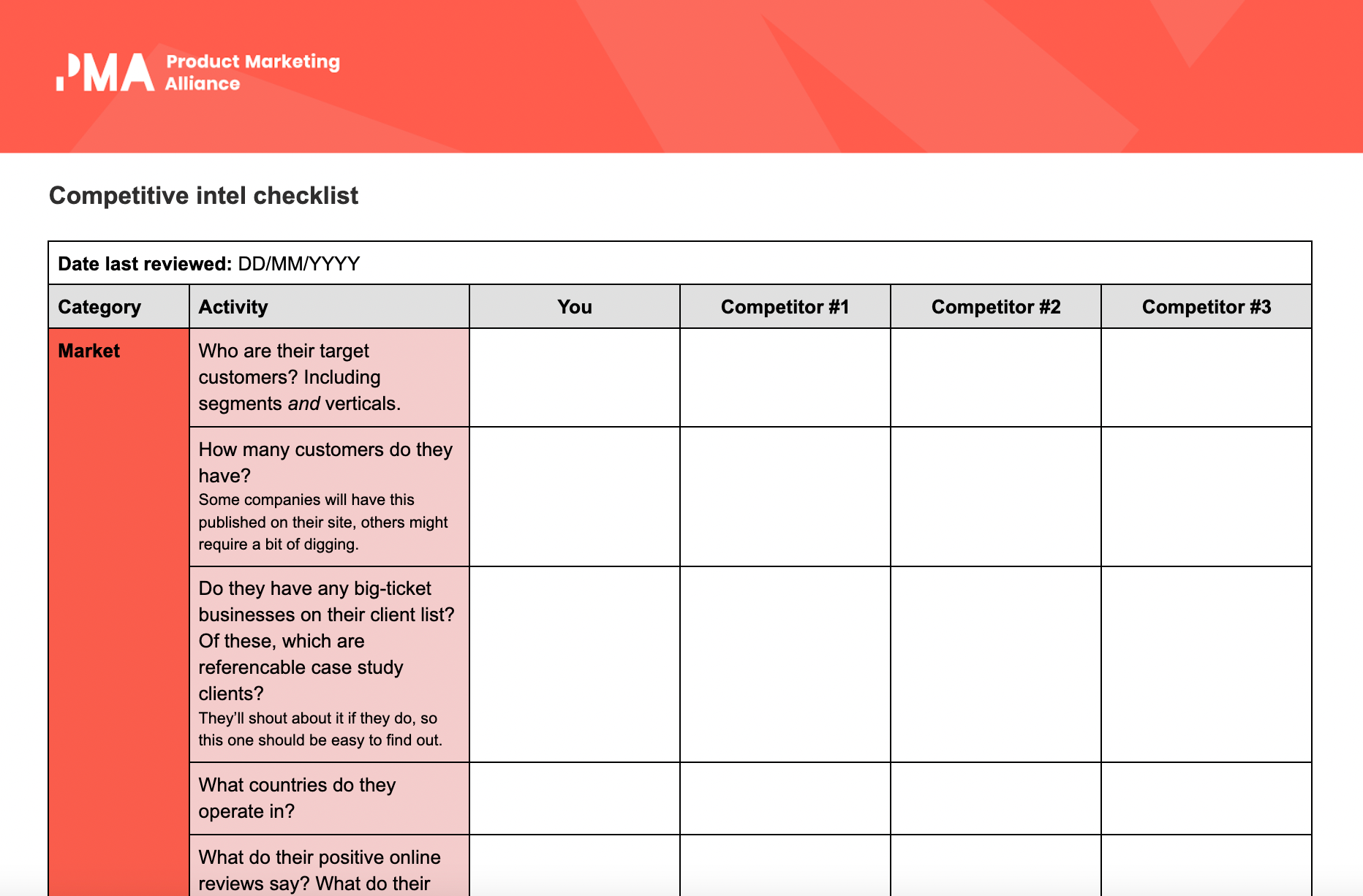What is a competitor comparison chart?
A competitor comparison chart (or competitive intel checklist) is a useful tool we’ve created to help marketing professionals systematically gather and analyze information about their competitors – all in one handy document.
The checklist covers various aspects of a competitor’s business, including market presence, product offerings, pricing strategies, marketing tactics, and sales processes.
The chart is designed to help you identify key competitors, understand their strengths and weaknesses, and uncover opportunities to differentiate your product. This valuable intelligence leads to more informed strategic decisions, more refined marketing messages, and improved product positioning.
How to use this template
Using the competitive intel checklist template is straightforward and ensures you cover all critical areas of competitive analysis. Follow these steps to make the most of the template:
Gather market information
- Identify your competitors’ target customers, including segments and verticals.
- Determine the number of customers they have and notable big-ticket businesses.
- Analyze their geographical presence and customer reviews, noting positive and negative trends.
Analyze product offerings
- List the suite of products offered by your competitors and their defining features.
- Compare pricing, discounts, and promotional offers.
- Assess the perceived strengths and weaknesses of their products.
- Check for free trials, partnerships, help documents, and user experience insights.
Evaluate positioning and messaging
- Examine how competitors differentiate themselves in the market.
- Review their messaging and use cases, noting any variations across segments or verticals.
Study marketing strategies
- Identify their tagline and activity across marketing channels like blogs, social media, webinars, etc.
- Determine the types of content they produce and their marketing approach (e.g., account-based marketing).
- Analyze their social media engagement, press releases, and event participation.
- Compare their organic search rankings and website visual identity.
Assess sales and customer success strategies
- Understand their sales process and sales cycle duration.
- Evaluate their use of tools like live chatbots and sales assets.
- Check their response times for customer requests and complaint escalation processes.
Provide a company overview
- Note any recent acquisitions or mergers.
- Describe their growth trajectory and employee distribution across departments.
- Identify the locations of their support and sales teams, and observe any recruitment surges.
By following these steps, you can gather comprehensive competitive intelligence, enabling you to make strategic decisions that enhance your product’s market position and drive business success.
Download your competitor comparison chart







